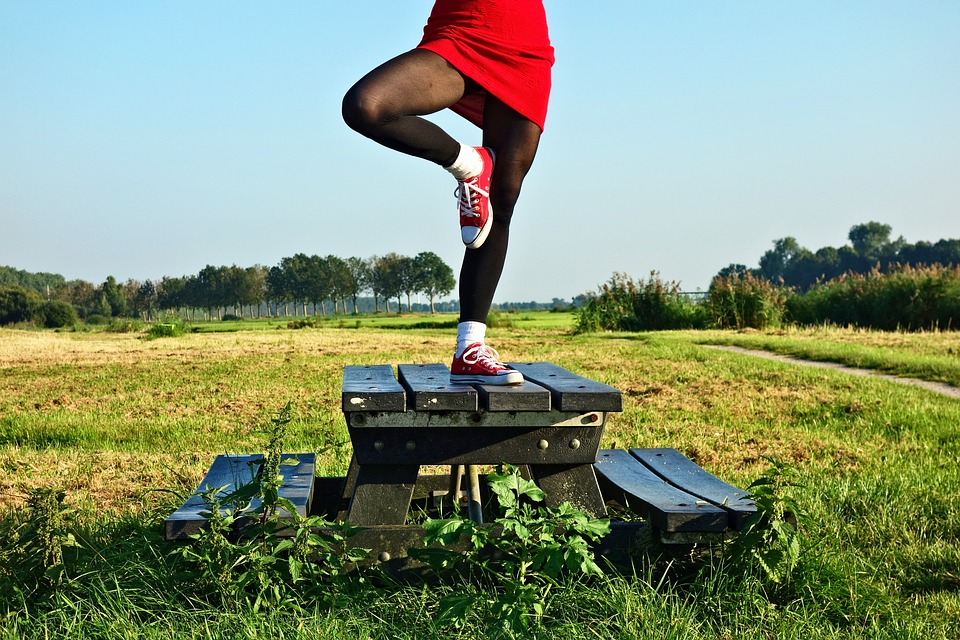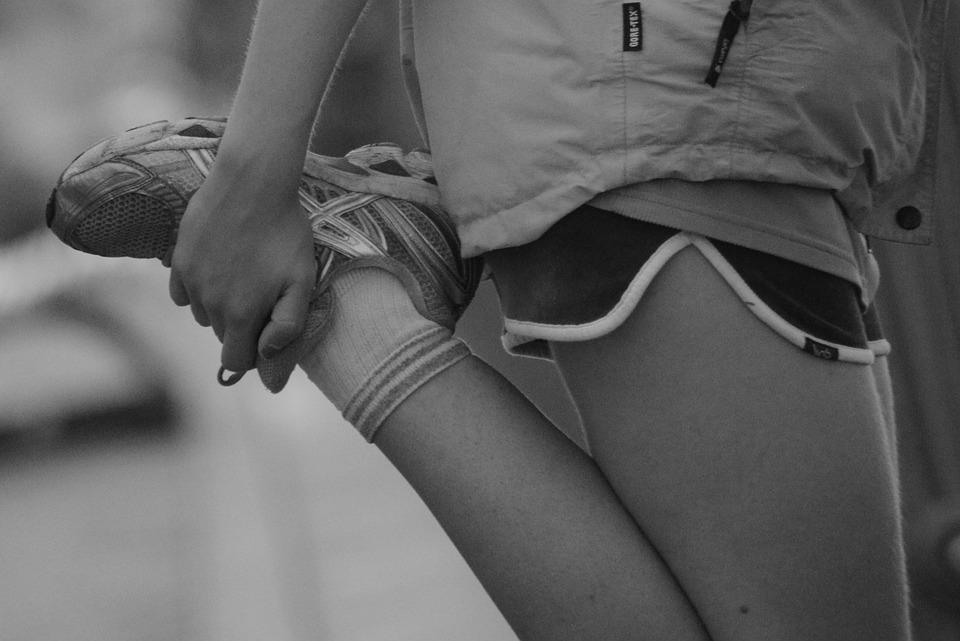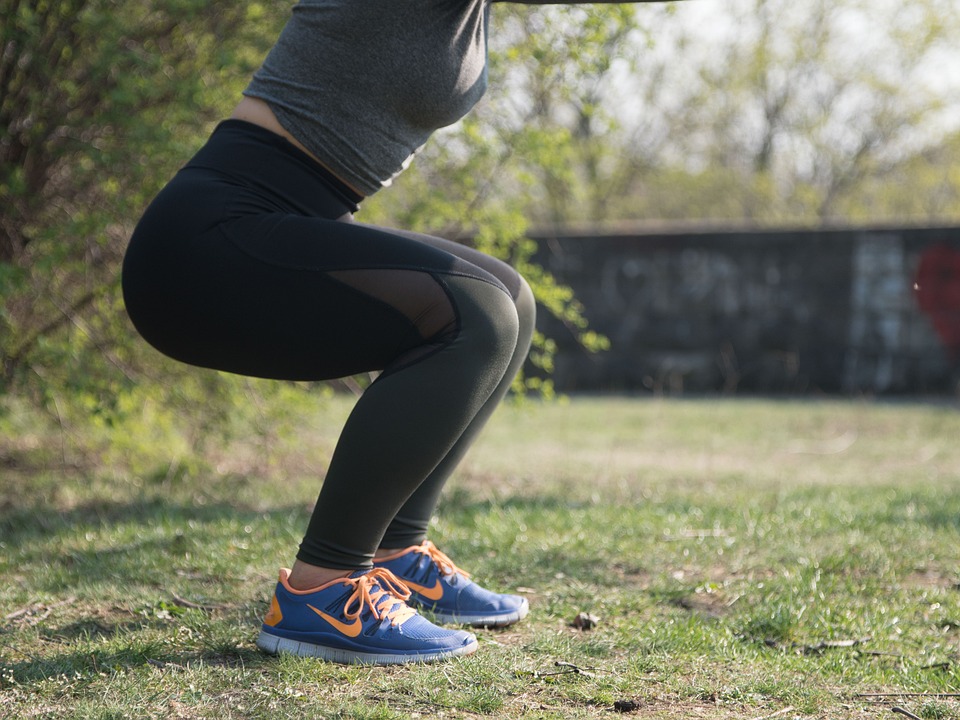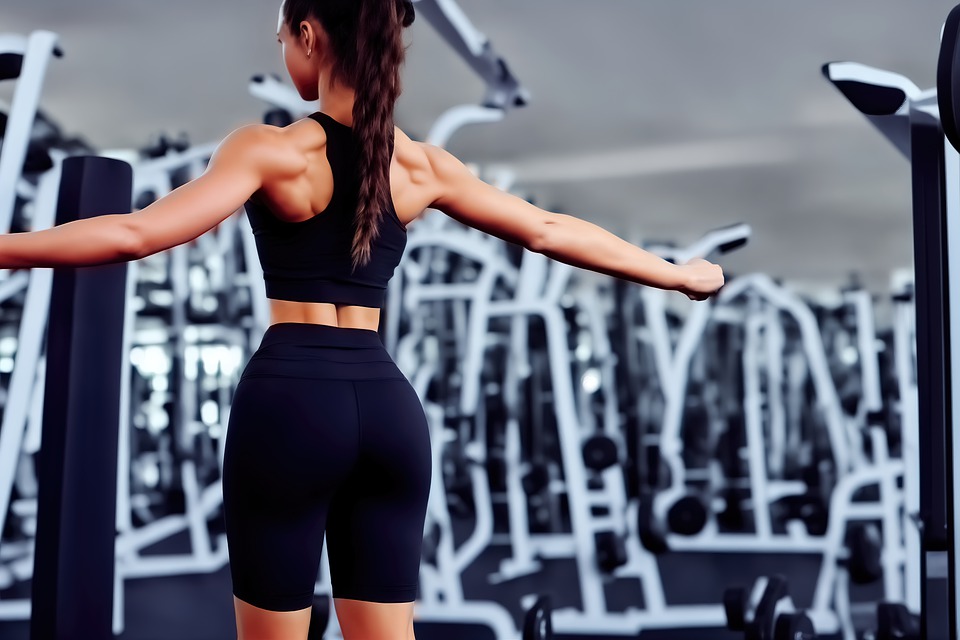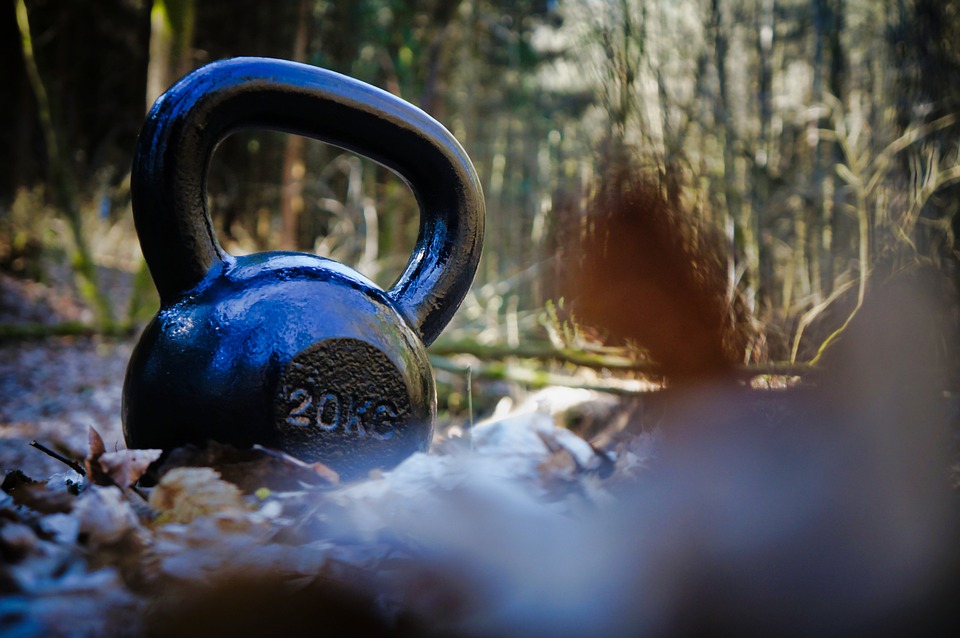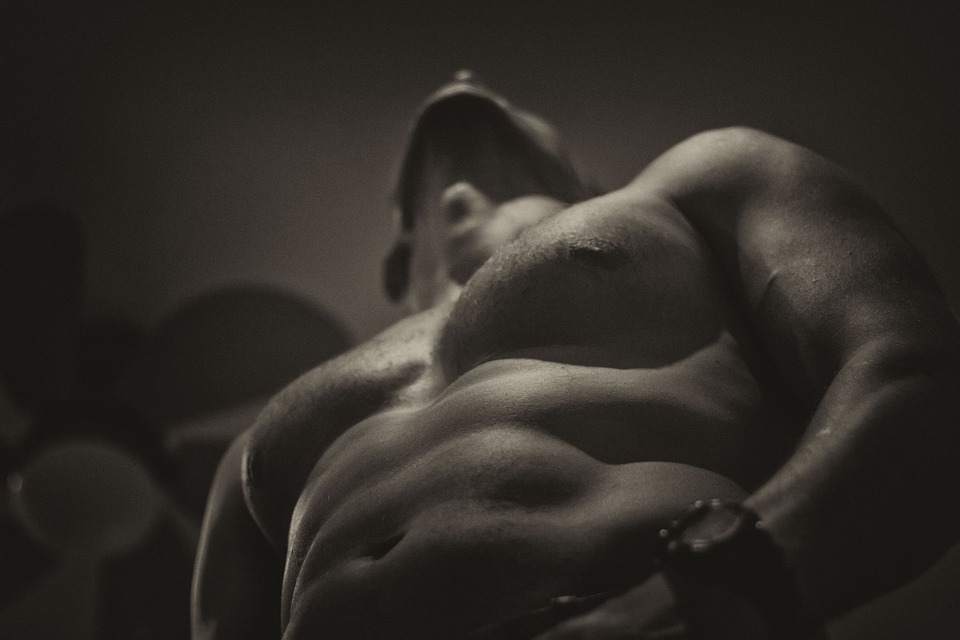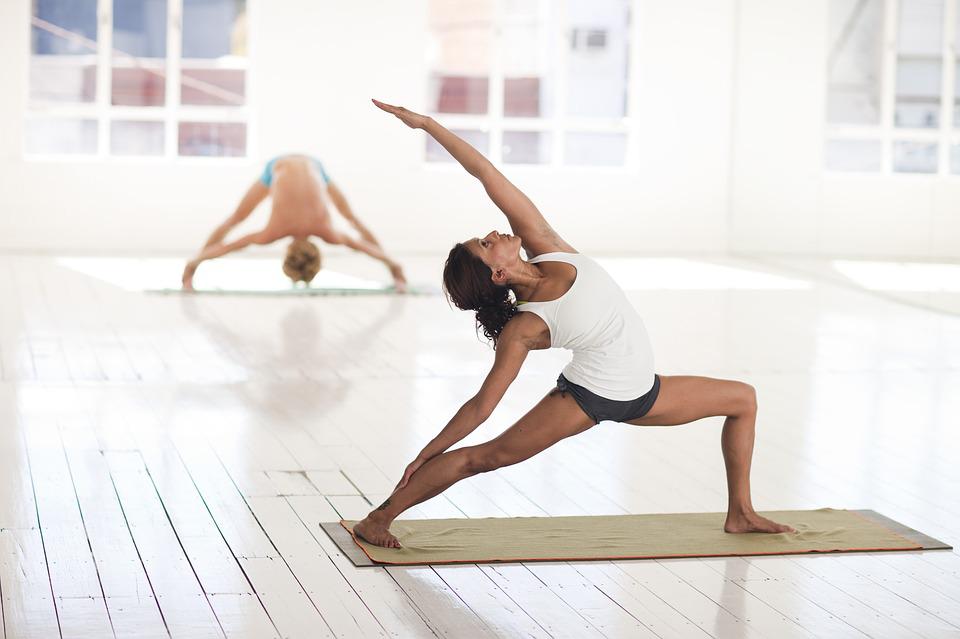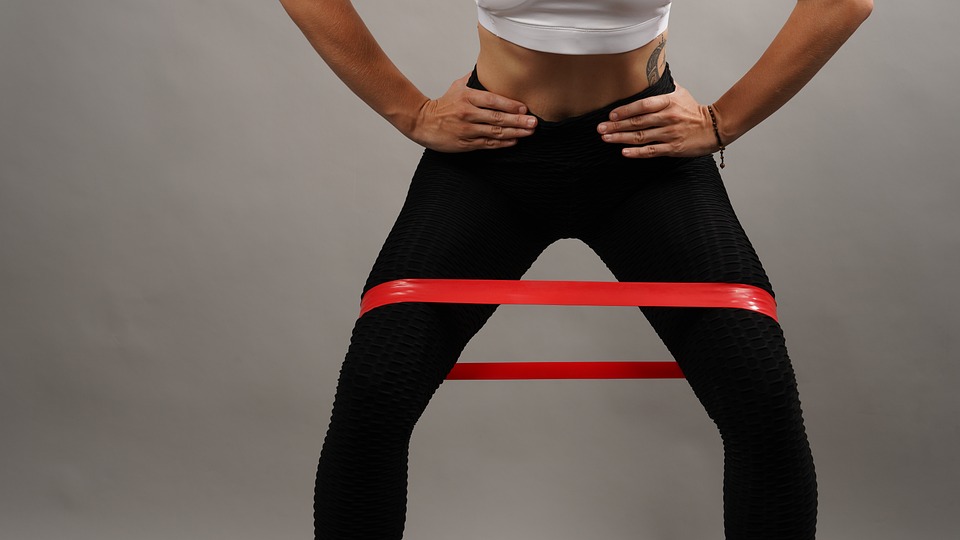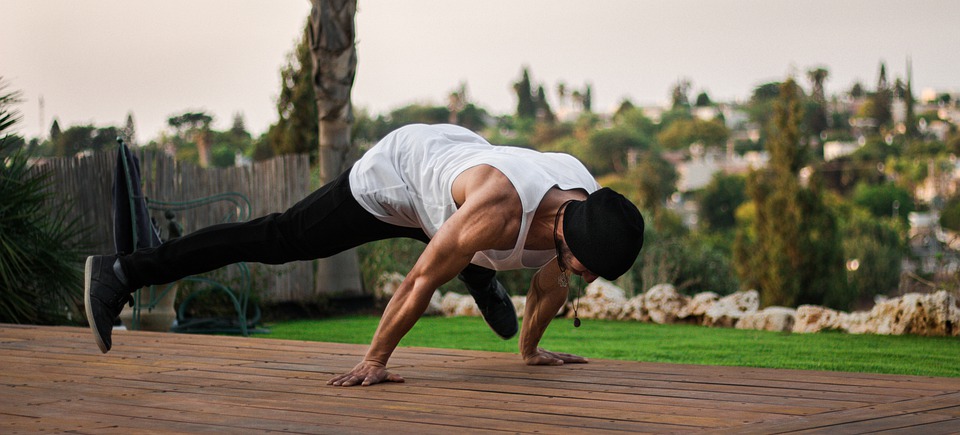
How does the hip work?
To understand what hip mobility is and what hip mobility exercises to do, we need to first understand how the hip works and the movements it helps us make:
The hip basically has 3 main movements. These are:
- Hip Rotation: This involves moving the foot left and right, as well as moving the straightened leg towards the toes.
- Hip Flexion and Extension: This involves moving the leg forward and backward.
- Hip Abduction and Adduction: This involves moving the leg out to the side, and in towards the other leg.
What is mobility?
In other words, mobility is the amount of movement your body can do.
It’s regarded as the foundational tenant of athleticism.
runners and athletes must have a good range of motion, strength, and control over their joints to perform well.
We can’t operate properly unless we’re evenly distributing forces throughout the body.
It is important for the following reason, as C Shante Cofield, Doctor of Physical Therapy explains.
”The best example is somebody who is trying to do an overhead squat and is struggling to squat down. Their bodies are using energy just to fight themselves.
People who can move freely and easily into a squat position have more energy available to use for the actual movement or activity, rather than just trying to get into the proper position.
What is hip mobility?
The ability of the hip joint to move effectively is hip mobility. This allows for most lower limb activities to be executed, such as running and compound exercises.
If the hip joint is not moving correctly, this can cause problems in other areas of the body, including the low back, knees, and ankles.
Hips are the second most mobile joint in the human body, being able to move 360 degrees. This is possible due to a combination of six different movements.
- Flexion and extension – movement forwards and backward
- Abduction and adduction – the movement away and towards the mid-line of the body
- Internal and external rotation – pivoting of the hip joint inwards and outwards
The hip joint can be thought of as a ball and socket. The ball-shaped head of the femur fits snugly into the socket (acetabulum) of the pelvis.
There are 21 muscles that run across the joint which help control and maneuver the hip through multiple movements. All these structures allow the hip to move in various directions.
Does stretching help with mobility?
Although stretching is a popular way to improve flexibility, the results are usually only temporary. This is because stretching by itself only provides a brief increase in the range of motion.
If you don’t do some form of dedicated strength work, your progress will quickly go in reverse.
There are seventeen muscles that contribute to the hip movement. Hips can move in three different planes of motion, as discussed above.
If you want to improve your hip mobility, you need to focus on stretching, stability, and strength.
The following are a few exercises that stretch and strengthen the hips to increase mobility.
If you are a runner and you want to improve your performance and avoid injuries, you should work on your hip mobility.
Why is mobility important for runners?
Practicing mobility exercises makes us more aware of our bodies and how far we can move them, which results in better running form and fewer injuries.
This stretching exercise helps to increase the range of motion in the hip joint, which can be helpful in loosening up tight areas.
For example, if your hips are too tight, you will rotate them with each step. This will create torque on your knees and lead to pain. You will also not be able to fully extend your back kick which will not allow you to create an optimal force against the ground for speed.
Mobility exercises help prevent injury and also help you recover strength and flexibility after an injury.
You need to address both muscle strength and flexibility to get the most out of mobility exercises. Specifically, hip mobility can help prevent injuries for runners.
What causes poor hip mobility?
If you spend a lot of time sitting, you’re more likely to have hip mobility issues. Stretching won’t solve the problem by itself.
Of course, sitting isn’t the only issue.
Hip mobility can be decreased or cause discomfort due to a variety of factors.
The other thing is that we’re all built differently.
Since our hips are at slightly different angles, we may not be in the same positions or depth in motions as others. That’s okay! Your anatomical differences should not make you feel ‘tight’ and they should not cause any pain or discomfort.
If you’re experiencing hip pain, it may be due to an acute injury or a more chronic condition such as back pain.
If you’re experiencing hip pain and reduced mobility, please reach out to your physical therapist. They will create a rehabilitation program tailored specifically for you and your condition.
Hip flexibility exercises and routines
The hip’s flexibility is determined by two main factors.
1. Your muscles’ ability to stretch
You can only flick the rubber band as far back as your muscles will allow you to.
You can tell how flexible a muscle is by how far it stretches. For example, if you do the hip flexor stretch on each leg, you can see how far each hip moves. If one hip moves a lot further than the other, that side is less flexible.
2. How far your joint can glide and slide within the joint
With each movement of the leg, the ball at the top of the Femur moves inside the socket. For example, when you raise your leg to kick a ball, the ball moves backward in the socket, allowing the leg to bend at the knee. If this type of movement did not occur, you could not raise your leg high enough to kick the ball.
Jeff Cavaliere, a physical therapist, has a simple demonstration of how to measure joint stiffness without a second pair of hands.
A springy feeling will indicate that the muscles around the joint are tight. Deliver a hip-knee flexion until you sense some tension, then softly press down into that tension and pulsate 10 times. You will experience either a rubbery or bony hard feeling. If it’s bony hard, that means the hip juncture is inflexible. If it’s rubbery, that suggests the muscles surrounding the juncture are taut.
There are hip stretches and exercises that can help improve your mobility by improving both muscular and joint flexibility.
1. Hip mobilizations with a power/resistance band
The purpose of this mobilization is to temporarily relieve joint stiffness by tying a powerband around the hip joint and performing specific movements. This can be a very beneficial stretch, particularly before deep squats or lunges.
2. 90/90 stretch
The purpose of this exercise is to improve hip mobility in both internal and external rotation, as well as to increase hip flexion. This makes it an ideal exercise for improving squatting techniques and solving related mobility issues.
3. Cossack squat
The Cossack squat is a great way to work on two things at once. It strengthens the lower legs as you squat, and also stretches the muscles in the groin area. This is a good exercise for people who have tightness in their groin area.
Hip stabilizer exercises
Joint stability is the ability of a joint to resist movement. It is the product of contributions from the muscles, bones, and nerves.
Hip stability is essentially the ability of the muscles and ligaments around the hip joint to allow it to move in the way that we want it to.
If we compare our bodies to cars, we can see that we need control in order to function properly. Just like a Ferrari needs a steering wheel to be driven, we need to be able to control our bodies in order to accomplish tasks throughout the day. Without adequate control, we would just be a mess.
The muscles that stabilize the hip are called the local hip muscles. They are small muscles, such as the gluteus medius and deep external rotators (i.e. piriformis, gemellus, quadratus femoris, etc.), which are located around the hip joint.
The stabilizers in your hips are constantly making small adjustments to your movement to make sure your body is moving efficiently. For example, the deeper you squat, the more your deep external rotators will activate to open up your hips.
One way to test the strength of your hip stabilizers is to do specific exercises until you can’t do them anymore. If one side is significantly weaker than the other, that may mean your hip stabilizers need more work.
1. Clam
The purpose of the hip external rotators is to provide dynamic hip stability during high-velocity movements. These muscles are especially important for single-leg activities, such as compound exercises or running sports.
The clams help to work and isolate the gluteus maximus muscles.
2. Squat into activating an external rotation
This exercise is a combination of the squat and clam. It is more functional and challenging than the clam because it focuses on strengthening the external rotators.
Activating the external rotators while standing helps improve hip stability during exercises such as squats and deadlifts.
3. Single-leg deadlift
The single-leg deadlift is a great way to strengthen your glutes and hamstrings while also improving your hip stability. When you’re in the single-leg position, your hip abductors (i.e. gluteus medius and gluteus minimus) have to work hard to keep your body stable and in alignment.
Hip strengthening exercises
Having strong hips is crucial for being able to do any activity that requires a lot of movement or mobility. Strength is the ability of your body to push against something (for example, your own weight or a barbell) and to move easily.
The gluteus maximus and medius muscles are the largest and most powerful muscles in the hip area. They are most active when performing heavy, explosive movements such as kettlebell swings, deadlifts, and hip thrusts.
However, just increasing your overall strength isn’t enough. You need to make sure your hip strength is proportional and balanced between both legs. Doing single-leg exercises such as split squats and lunges will make sure both your legs are equally strong and the same size.
To check for weak spots in your muscles, compare the number of repetitions you can do on each side for an exercise like single-leg bridges.
1. Frog pumps
The purpose of this exercise is to work the gluteus maximus muscle. This muscle is not only the strongest hip extensor but also the strongest external rotator.
Frog pumps are a great way to maximize the activity of your glute. If you have trouble feeling your glute, try doing frog pumps.
2. Kettlebell swings
The purpose of kettlebell swings is to strengthen the posterior kinetic chain, which includes the low back, glute, and hamstrings.
Building explosive movements through hip exercises can help improve your technique for powerlifting exercises such as squats and deadlifts.
3. Forward Lunge
Purpose: Lunge walks are excellent dynamic hip-strengthening exercises for several purposes, this includes:
- Individually strengthening up both legs
- One of the most effective hip exercises for developing quadriceps size and strength
- Can be performed anywhere, with or without weights
Where hip mobility exercises have gone wrong
There are some common mistakes that need to be addressed when performing any type of mobility exercise.
1. Insufficient volume
If you don’t brush your teeth every day, you won’t have clean teeth. The same goes for if you don’t do hip mobility exercises every day – you won’t get the results you want.
Exercises only work if you actually execute them sufficiently.
At a minimum, 3-4 days a week, you should do hip mobility exercises. The number of exercises will vary, but in general, you should do 3 sets of 10-15 reps.
2. Ensure you have a clear goal
The purpose of these hip mobility exercises is to improve your hip movement. Don’t do the exercises if you don’t know why you’re doing them.
And above all else, keep at it. Don’t get frustrated when you don’t see results immediately. Choose a specific goal and put all your effort into achieving it. For example, if you want to be able to do a deeper squat, purposeful exercise selection, and dedication are key. Be patient and don’t give up even if you don’t see results right away.
3. Stretching is NOT the only answer
The debate overstretching is very polarized. Those who adhere to traditional methods swear by it, while modern-day researchers paint it as the villain. Stretching has its time and place, but it shouldn’t be the only mobility exercise you do.
Hip mobility is often misunderstood as something that can be improved solely through stretching. While stretching may provide relief, it is not a long-term solution. To improve hip mobility, it is necessary to consider all areas that might be impacting it.

